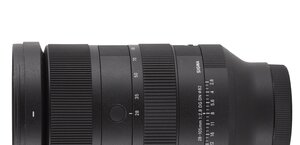Sigma C 24 mm f/2 DG DN
8. Vignetting
| A7R II, APS-C, f/2.0 | A7R II, APS-C, f/2.8 |

|

|
In this case you get some chances to notice vignetting only at the maximum relative aperture were it amounts to 24% (−0.80 EV). By f/2.8 it decreases to 12% (−0.36 EV), and by f/4.0 it is 11% (−0.34 EV).
Please Support UsIf you enjoy our reviews and articles, and you want us to continue our work please, support our website by donating through PayPal. The funds are going to be used for paying our editorial team, renting servers, and equipping our testing studio; only that way we will be able to continue providing you interesting content for free. |
- - - - - - - - - - - - - - - - - - - - - - - - - - - - - - - - - - - - - - - - - - - - - - - -
Of course after passing to full frame there are far more problems and photos, shown below, prove that much.
| A7R II, FF, f/2.0 | A7R II, FF, f/2.8 |

|

|
| A7R II, FF, f/4.0 | A7R II, FF, f/5.6 |

|

|
At the maximum relative aperture vignetting reaches a huge level of 69% (−3.36 EV) – moderate physical dimensions of the lens make themselves felt. When you stop down the aperture to f/2.8 the aberration, described here, decreases to a still very high level of 55% (−2.28 EV). Even by f/4.0 and f/5.6 vignetting levels are easy to spot, as our measurements showed, respectively, 38% (−1.40 EV), and 32% (−1.14 EV). As if it wasn't enough, further stopping down of the aperture didn't have any measureable effect on light fall-off.
| Sony A7R III, JPEG, f/2.0 |
 |






